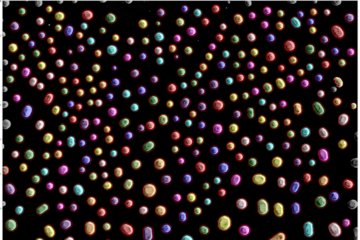All genres
41.
Journal Article
Thermodynamic Model Formulations for Inhomogeneous Solids with Application to Non-isothermal Phase Field Modelling. Journal of Non-Equilibrium Thermodynamics 41 (2), pp. 131 - 139 (2016)
42.
Journal Article
Strongly non-local modelling of dislocation transport and pile-up. Philosopical Magazine A 96 (12), pp. 1171 - 1187 (2016)
43.
Journal Article
Comparison of two models for anisotropic hardening and yield surface evolution in bcc sheet steels. European Journal of Mechanics - A/Solid 54, pp. 120 - 131 (2015)
44.
Journal Article
Rapid theory-guided prototyping of ductile Mg alloys: from binary to multi-component materials. New Journal of Physics 17 (9), 093009 (2015)
45.
Journal Article
From generalized stacking fault energies to dislocation properties: Five-energy-point approach and solid solution effects in magnesium. Physical Review B 92 (6), 064107 (2015)
46.
Journal Article
Thermodynamic and rate variational formulation of models for inhomogeneous gradient materials with microstructure and application to phase field modeling. Acta Mechanica Sinica 31 (2), pp. 162 - 172 (2015)
47.
Journal Article
Thermomechanical characterization of Portevin-Le Chatelier bands in AlMg3 (AA5754) and modeling based on a modified Estrin-McCormick approach. International Journal of Plasticity 67, pp. 192 - 216 (2015)
48.
Journal Article
Atomistically determined phase-field modeling of dislocation dissociation, stacking fault formation, dislocation slip, and reactions in fcc systems. Journal of the Mechanics and Physics of Solids 77, pp. 109 - 122 (2015)
49.
Journal Article
Comparison of phenomenological and laminate-based models for rate-dependent switching in ferroelectric continua. GAMM-Mitteilungen 38 (1), pp. 147 - 170 (2015)
50.
Journal Article
Coordinate-invariant phase field modeling of ferro-electrics, part II: Application to composites and poly-crystals. GAMM-Mitteilungen 38 (1), pp. 115 - 131 (2015)
51.
Journal Article
Coordinate-invariant phase field modeling of ferro-electrics, part I: Model formulation and single-crystal simulations. GAMM-Mitteilungen 38 (1), pp. 102 - 114 (2015)
52.
Journal Article
Modeling and finite element simulation of loading-path-dependent hardening in sheet metals during forming. International Journal of Plasticity 63, pp. 64 - 93 (2014)
53.
Journal Article
Application of non-convex rate dependent gradient plasticity to the modeling and simulation of inelastic microstructure development and inhomogeneous material behavior. Computational Materials Science 80, pp. 51 - 60 (2013)
54.
Journal Article
Modeling Dislocation-Stacking Fault Interaction Using Molecular Dynamics. Proceedings of Applied Mathematics and Mechanics 13 (1), pp. 11 - 14 (2013)
55.
Journal Article
Quasi-linear versus potential-based formulations of force-flux relations and the GENERIC for irreversible processes: Comparisons and examples. Continuum Mechanics and Thermodynamics 25 (6), pp. 803 - 816 (2013)
56.
Journal Article
Modeling and simulation of deformation behavior, orientation gradient development and heterogeneous hardening in thin sheets with coarse texture. International Journal of Plasticity 50, pp. 109 - 126 (2013)
57.
Journal Article
Analysis and comparison of two finite element algorithms for dislocation density based crystal plasticity. GAMM-Mitteilungen 36 (2), pp. 219 - 238 (2013)
58.
Journal Article
Modeling of a thermomechanical process chain for sheet steels. International Journal of Mechanical Sciences 74, pp. 46 - 54 (2013)
59.
Journal Article
Ab initio and atomistic study of generalized stacking fault energies in Mg and Mg–Y alloys. New Journal of Physics 15 (4), pp. 043020-1 - 043020-19 (2013)
60.
Journal Article
Model of mismatched contact for dislocation generation during coalescence of grains. Philosophical Magazine Letters 93 (4), pp. 246 - 253 (2013)










